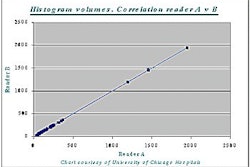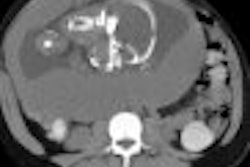As one of the best-known pediatricians in the U.S., Dr. Alan Greene is used to fielding calls from worried parents when their child gets a fever or rash. But last month he received a deluge of calls that weren’t so typical.
"Parents asked me to never refer their children for CT scans," said Greene, a pediatrician at the Lucile Packard Children’s Hospital in Palo Alto, CA. He is also director of DrGreene.com, a consumer Web site for pediatric health information.
Parents are worried due to the findings of a recent study that found that children are exposed to as much as five times more radiation than necessary during CT scans. The study, which was published in the February issue of the American Journal of Roentgenology and was subsequently picked up by the news media, found that at some hospitals CT scanners aren’t adjusted to account for children’s lower weight and body size, meaning kids receive adult-sized doses of radiation.
Greene quelled the parents’ fears by telling them that, even in worst-case scenarios, the benefits of CT far outweigh its risks, and that CT radiation is administered appropriately at most pediatric hospitals. But Greene said the study wasn't surprising.
"Kids are often treated as if they’re adults at large, busy hospitals -- often to their detriment," he said. "This is one of those cases."
Although there’s no question that pediatric radiation exposure must be closely monitored -- children are more susceptible than adults to the chromosome-damaging effects of radiation because their cells divide more rapidly -- not everyone agrees that CT poses a risk.
"It’s exceedingly rare for children to receive too much radiation from CT," said Dr. Jeffrey Landman, a neuroradiologist at Vanderbilt University Hospital in Nashville. "Scanners are properly calibrated, and I’ve never seen a correlation between CT and increased health problems in children."
Unlike Greene, Landman was surprised by the study. "The vast majority of radiologists and CT manufacturers have a strong handle on minimizing radiation exposure," he said.
However, Greene pointed out that some radiologists simply refer to the CT manufacturer's adult-specific recommendations when setting a scanner’s tube current, an indication of radiation exposure. In addition, CT scanners have become more sensitive in recent years, but the tube current recommendations remain unchanged in some cases, he said. And CT isn’t like radiography: The more radiation used in children’s x-rays, the worse the image.
"With CT, an adult dose works fine with children, so there hasn’t been an incentive to lower radiation -- even though we can expose kids to less radiation and still acquire great images," Greene said.
How much less was the point of a study presented at the European Congress of Radiology meeting last year. Researchers from the University of Muenster in Germany performed CT scans on children using progressively lower tube currents. The first children in the study were imaged using between 100 mA and 225 mA, and over the course of 47 CT scans the researchers gradually lowered the tube current down to 50 mA without sacrificing image quality.
Their findings roughly coincided with a weight-based scale of suggested tube currents that accompanied the February AJR study. According to the scale, the tube current should be set to only 40 mA for an infant weighing between 10 and 19 pounds. Other ways to reduce radiation exposure include weeding out unnecessary referrals and using radiation-free exams such as ultrasound and MRI when possible, the authors suggested.
Last year, member nations of the European Union passed legislation aimed at minimizing medical radiation exposure, with CT expected to shoulder the brunt of the reductions.
Greene said he hopes the study will spur change in the U.S. Ideally, large hospitals should have one scanner that’s dedicated to children, or at the very least radiologists should remember to recalibrate CT machines whenever children are scanned, he said.
"The bottom line is that CT saves children’s lives," Greene said. "It has revolutionized the workup of many pathologies such as appendicitis, tumors, and brain swelling. We just have to be more conscious of how we use it."
By Dan KrotzAuntMinnie.com contributing writer
February 13, 2001
Related Reading
Society for Pediatric Radiology
CT radiation exposure higher than necessary in children, January 23, 2001
CT may beat US in pediatric appendicitis, but at what price?, September 27, 2000
Multidetector CT in pediatrics yields better treatment, lower costs, July 7, 2000
Studies reiterate the value and quality of ultrafast CT and MRI for pediatric patients, May 8, 2000
Click here to post your comments about this story. Please include the headline of the article in your message.
Copyright © 2001 AuntMinnie.com



















